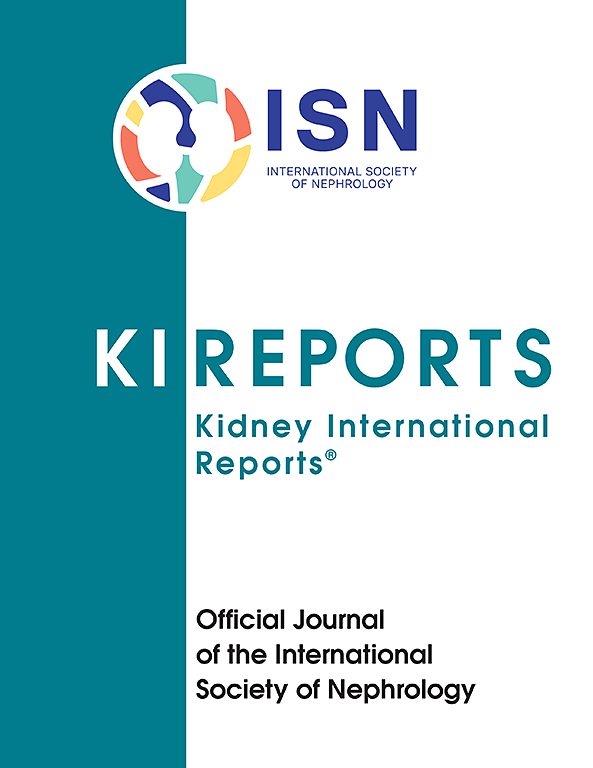Pharmacokinetics and Side Effects of Δ9-Tetrahydrocannabinol and Cannabidiol in Patients with Different Stages of CKD
IF 5.7
2区 医学
Q1 UROLOGY & NEPHROLOGY
引用次数: 0
Abstract
Introduction
Chronic kidney disease (CKD) affects approximately 10% of the global population and is associated with a large symptom burden. Medicinal cannabis is advised against in patients with severe CKD. However, pharmacokinetic and pharmacodynamic knowledge regarding their use in patients with CKD is lacking.
Methods
We aimed to investigate the pharmacokinetics and side effects of a single dose of Sativex, corresponding to 5.4 mg Δ9-tetrahydrocannabinol (THC) and 5 mg cannabidiol (CBD), in patients with CKD stages 4 and 5 compared with healthy volunteers (controls). The study was a nonrandomized and unblinded clinical study.
Results
Twenty controls and 29 patients with CKD completed the study. The area under the curve (AUC) for THC (median [interquartile range]) was 2.76 (1.77–3.48), 4.16 (3.35–5.28), and 4.31 (3.16–5.42) h × ng/ml for controls, and for patients with CKD stages 4 and 5, respectively, with significant differences between patients with CKD and controls. AUC for CBD and metabolites, and other pharmacokinetic parameters, such as maximum concentration (Cmax) and excretion of metabolites in urine were also significantly different between patients with CKD and controls. After 1.5 hours, numeric rating scale (NRS) scores for dizziness were significantly higher for each CKD group compared with controls (mean NRSscores: 0.7 and 1.5 vs. 0.1).
Conclusion
Total exposure to THC, CBD, and metabolites was higher in patients with CKD stages 4 and 5 compared with controls, and side effects may be more pronounced; however, the intersubject variability was high. If cannabis products are administered to patients with severe CKD, caution is needed.

求助全文
约1分钟内获得全文
求助全文
来源期刊

Kidney International Reports
Medicine-Nephrology
CiteScore
7.70
自引率
3.30%
发文量
1578
审稿时长
8 weeks
期刊介绍:
Kidney International Reports, an official journal of the International Society of Nephrology, is a peer-reviewed, open access journal devoted to the publication of leading research and developments related to kidney disease. With the primary aim of contributing to improved care of patients with kidney disease, the journal will publish original clinical and select translational articles and educational content related to the pathogenesis, evaluation and management of acute and chronic kidney disease, end stage renal disease (including transplantation), acid-base, fluid and electrolyte disturbances and hypertension. Of particular interest are submissions related to clinical trials, epidemiology, systematic reviews (including meta-analyses) and outcomes research. The journal will also provide a platform for wider dissemination of national and regional guidelines as well as consensus meeting reports.
 求助内容:
求助内容: 应助结果提醒方式:
应助结果提醒方式:


